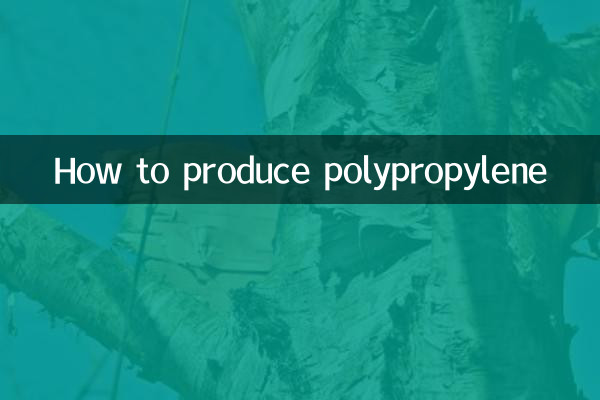How to produce polypropylene
Polypropylene (PP) is a thermoplastic widely used in packaging, textiles, automobiles, medical and other fields. Its production methods mainly include gas phase method, liquid phase method and bulk method. Different processes have differences in catalysts, reaction conditions and product characteristics. The following is a detailed analysis of polypropylene production.
1. Comparison of polypropylene production processes

| Production process | Catalyst type | reaction conditions | Product features |
|---|---|---|---|
| gas phase method | Ziegler-Natta or metallocene | 70-90°C, low pressure | High crystallinity, suitable for thin films |
| Liquid phase method (slurry method) | Ziegler-Natta | 50-80°C, medium pressure | Broad molecular weight distribution, suitable for injection molding |
| Ontology | Ziegler-Natta | 60-80°C, high pressure | High transparency for food packaging |
2. Production process steps
1.Raw material preparation: The purity of propylene monomer needs to be >99.5%, and impurities such as sulfur and water must be removed.
2.polymerization reaction: Under the action of catalyst, propylene undergoes a chain growth reaction to generate polypropylene particles.
3.Separation and purification: Unreacted propylene is recovered and recycled, and the polymer is delimed and dried.
4.Granulation and modification: Melt extrusion granulation, functional additives such as antioxidants and color masterbatch can be added.
3. Global polypropylene production capacity distribution (2023 data)
| area | Production capacity (10,000 tons/year) | Proportion |
|---|---|---|
| Asia | 4,200 | 58% |
| North America | 1,100 | 15% |
| Europe | 900 | 12% |
4. Recent industry hot spots
1.sustainable development: Research and development of bio-based polypropylene is accelerating, and companies such as Coca-Cola have launched 100% renewable packaging.
2.Capacity expansion: A new 2 million tons/year device will be built in the Middle East and is expected to be put into operation in 2025.
3.technological breakthrough: Single active center catalyst increases the toughness of polypropylene by 30% and is used in new energy vehicle parts.
5. Future development trends
As environmental regulations tighten, chemical recycling technologies (such as pyrolysis and oilification) will become the key to the circular economy of polypropylene. In addition, the demand for high-frequency and low-dielectric materials in 5G communications will promote the research and development of special polypropylene.

check the details

check the details